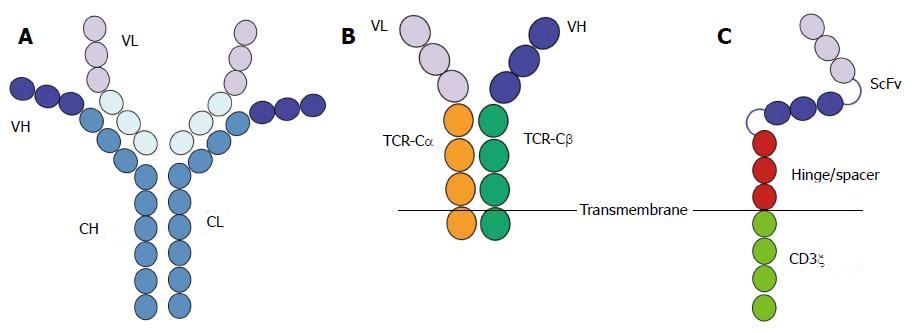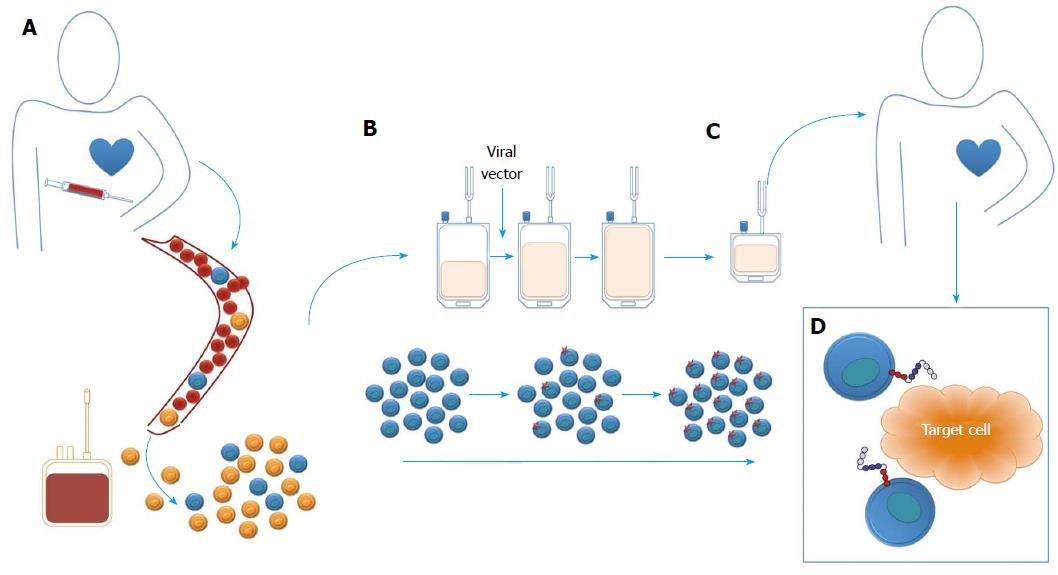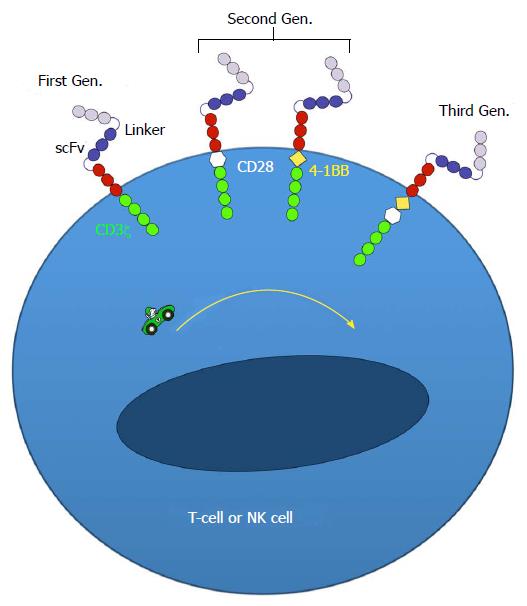Copyright
©The Author(s) 2015.
Figure 1 Chimeric antigen receptor structure.
A: Most commonly CARs are targeted using the VH and VL domains of a monoclonal antibody; B: In prototypic CAR designs, these were individually fused to the constant domains of TCR-Cα and TCR-Cβ; C: However, more recent iterations entail the initial fusion of VH and VL, thereby creating a scFv moiety which is then fused to a hinge/spacer and a T-cell activating module, such as the endodomain of the ζ subunit of the TCR/CD3 complex. CH: Constant heavy domains; CL: Constant light domains; CARs: Chimeric antigen receptors; VH: Variable heavy; VL: Variable light; scFv: Single chain variable fragment.
Figure 2 The overview of manufacture of chimeric antigen receptor T-cell products.
A: Starting material is most commonly a leukapheresis, although some systems employ whole blood at this stage; B: Peripheral blood mononuclear cells are isolated and T-cells then activated and genetically engineered (in this case with a viral vector); C: After ex-vivo expansion, the cell product is formulated and administered; D: After which engineered cells can engage target cells via the CAR. CAR: Chimeric antigen receptor.
Figure 3 Evolution of chimeric antigen receptors.
First Gen. CARs contain a source of “signal 1” alone, exemplified by CD3ζ. This is augmented in a second generation CAR by the inclusion of one co-stimulatory module, commonly from either CD28 or 4-1BB. The inclusion of two such co-stimulatory modules defines third generation CARs. CARs: Chimeric antigen receptors; Gen.:Generation.
- Citation: Schalkwyk MCV, Maher J. Chimeric antigen receptors: On the road to realising their full potential. World J Immunol 2015; 5(3): 86-94
- URL: https://www.wjgnet.com/2219-2824/full/v5/i3/86.htm
- DOI: https://dx.doi.org/10.5411/wji.v5.i3.86











